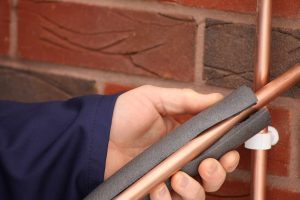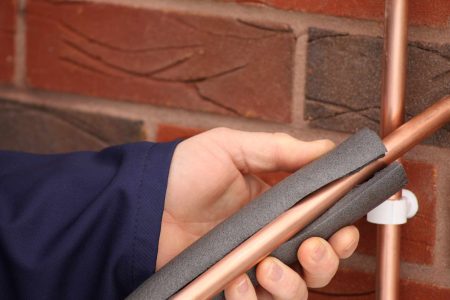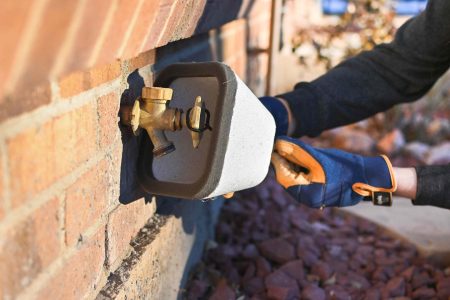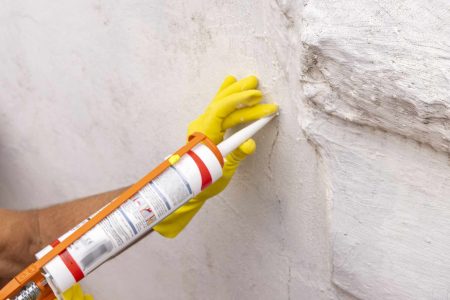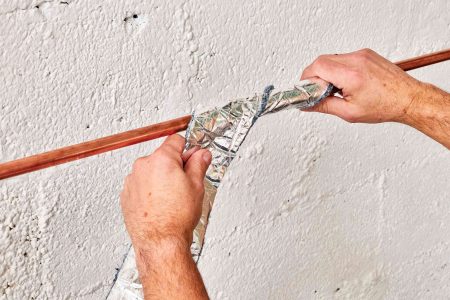Mortar bonds bricks or other masonry units and strengthens walls and other structures. Type S mortar mix, in particular, is load-bearing and performs extremely well to withstand pressure from soil, wind, and seismic loads.
However, there are other types of mortar mixes—types N, O, and M—that are mixed with different ratios of cement, lime, and sand to produce specific performance characteristics, emphasizing flexibility, bonding properties, and compressive strength. The best type of mortar and its use depends on the application and the design specifications for the project.
Type S Mortar Mix
Type S mortar mix offers high compressive strength of over 1,800 psi and high-tensile bond strength. This makes type S mortar mix suitable for many projects at or below grade.
Type S mortar mix is a load-bearing mix that can withstand pressure from the structure that it is bearing, as well as pressure from soil, wind, and seismic loads.
The most common ratio formula for Type S mortar is two parts Portland cement, one part hydrated lime, and nine parts sand. It can be mixed at different ratios for strengths reaching 2,300 and 3,000 psi.
Type S is the common choice for many below-grade applications, such as masonry foundations, manholes, retaining walls, and sewers, as well as at-grade projects like brick patios and walkways. Lime gives type S its water-resistant properties, as opposed to mortar mixes with lower ratios of lime.
Type N Mortar Mix
Type N mortar is a general-purpose mix usually recommended for exterior and above-grade walls (including stone veneer) exposed to severe weather and high heat.
Type N mortar mix has a medium compressive strength and is composed of one part Portland cement, one part lime, and six parts sand.
Type N mortar mix is useful for above-grade, exterior, and interior load-bearing installations. It is also the preferred mortar mix for soft stone masonry (such as limestone). Type N is the mortar most often used by homeowners and is the best choice for general application. It typically achieves 750 pounds per square inch (psi) strength within 28 days.
Type O Mortar Mix
Type O mortar mix has relatively low compressive strength, at about 350 psi. As such, it is used primarily for interior, above-grade, non-load–bearing walls.
Type O mortar mix can be used as an alternative to Type N for some interior applications, but its exterior use is limited due to its low structural capacity.
Type O mortar mix is not recommended in areas subjected to high winds. However, type O mortar mix is ideal for repointing and similar repair work on existing structures, due to its consistency and ease of application.
Type M Mortar Mix
Type M mortar mix has the highest amount of Portland cement and is recommended for heavy loads and below-grade applications, including foundations, retaining walls, and driveways.
While type M mortar provides at least 2,500 psi of compressive strength, it offers relatively poor adhesion and sealing properties, making it unsuitable for many exposed applications. Type M is preferred for use with natural stone because it offers similar strength to that of stone.
Type K Mortar Mix
Type K mortar is rarely used for new construction but may be specified for restoration or other specialty applications. It offers a very low compressive strength of only about 75 psi.
Because of its softness, type K is primarily used for restoring the masonry on historic or ancient buildings that require a special mix that is not significantly stronger than the existing masonry.
-
Which type of mortar is the strongest?
The strongest type of mortar is type M mortar mix. This mortar contains the most cement in its ratio, making it ideal for heavy applications like foundations and retaining walls.
-
Can I use Type S mortar without sand?
Type S mortar cannot be used without sand. Type S mortar mixed without sand may shrink and fail. Pre-mixed type S mortar will always contain sand.
-
How long does mortar take to harden?
Most mortar mixes cure to 60-percent strength one full day after application. They reach full compressive strength 28 days after application.
Read the full article here

